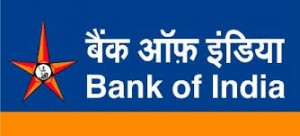The predominant apprehension that most men we interacted with had was the fact that the powers provided by the new law put up be used lethally by ill-willed women to ruin careers and hard-earned reputation
A set of humans are scared of what can come about if women resort to abusing this power and applying the law in malicious ways. Granted that there are various examples of abuse of women-friendly provisions in criminal law, particularly in cases of souring marital relationships, men fear that the same applies to anti-sexual harassment laws.
Yet, the accuracy is the shifting mentality of law enforcement agencies and our own legal knowledge can minimize or reject the abuse of anti-sexual harassment laws completely.
The law proposes to equip organizations to manage a workplace-related evil, not give women undue power or to cast men in awe. It is true that women-friendly laws have been abused in the past, but courts and police have become sensitive to this and they are more careful now to determine the legitimacy of complaints before about taking adverse action.
It is not that a man will immediately be punished in one case a charge is filed against him. Systems are aware of the possibility of misuse and don’t require to encourage it.
Internal Complaints Committees (ICCs) are needed to properly weigh relevant facts and exercise decision-making skills while deciding cases. Lawfully, the penalty for filing a false complaint can be as severe as the penalty for committing sexual harassment itself. The challenge, of course, is in having a mature ICC, which is capable of performing this mapping.
Then once more, several male respondents stated that they had contemplated avoiding collaborations with women on projects, etc. In reverence of the anti-sexual harassment law being invoked against them falsely.
Shockingly, a larger section of the men we talked to seemed to think that sexual harassment doesn’t exist in their respective systems. Their argument was, if such events have not risen in the past, how was it believable that sexual harassment indeed exists in those situations. They applied the same knowledge and trust in their constitution to contend against the execution of anti-sexual harassment laws in their works.
Nevertheless, it must be pointed out that establishing a conducive workplace environment is in the interest of everyone, both human races and women. The law cannot function as effectively without male support. If we allow sexual harassment to exist in the workplace and not take steps against it, we are paving the path for other sorts of harassment and discrimination to also sneak in.
In fact the law brings into report the possibility of abuse and actually encourages a sound workplace environment. For instance, a man’s reputation is not sullied just because a sexual harassment complaint has been lodged against him – the law provides us confidentiality protection as well. Even if, by chance, a man is found to have committed sexual harassment, his identity cannot be exposed to the public. This offers a meaningful chance to pop out on a clean slate in the hereafter.
The various flaws in the legal apparatus to deal with sexual harassment as it survives today:-
Single of the most dubious provisions is Section 498-A of the Indian Penal Code. While the provision has been created to protect women from marital violence, the arbitrariness that it confers upon the police offices as well as the women who allege domestic violence has been met with opprobrium and accused of fostering misogyny. Domestic violence under Section 498-A is a cognizable, non-bailable and non-compoundable offense. Such an arrangement lets no room for out-of-court resolutions. The petitioners do not deliver the option of revoking the charges. Complaints registered under this Section also warrant immediate arrests of the husband and the family members where necessary. A necessary implication of the non-bailable nature of the crime is the bleak possibility of the marital relationship being restored. The shock of these consequences is manifold because the charges are irrevocable. Statistics indicate that in the period of 2011-2012, there was a 9.4% gain in the number of cases filed under Section 498A. Nevertheless, its counter-tale lies in the fact that the conviction rate is a miserly figure of 15%.
Traces have been worked to amend the planning that has oft-been termed diabolic. The Malimath Committee on Criminal reforms (2003) proposed that the offense under Section 498-A be made compoundable and bailable. This sentiment was repeated in the 243rd Law Commission Report. Justice CK Prasad in his opinion in the case of Arnesh Kumar v State of Bihar also highlighted the pressing demand to balance the interests of the woman as well the stability of the household.
Another legal breakthrough is the Sexual Harassment of Women at Workplace Act, 2013 that was enacted after more than a decade of deliberation and re-test. The landmark judgment of the Court in the Vishakha case was accompanied by a set of guidelines, in lieu of India’s international and constitutional commitments (such as the Convention on Elimination of All forms of Discrimination Against Women and the right to safe work environment and right to freely practice one’s profession enshrined in Articles 19 (1) (g), 15 (3), 21 and 14). The Act, in the backdrop of the Court’s decision in the Medha Kotwal case and the Vishakha case, put down a framework for investigation of charges of sexual molestation. The compulsory nature of the Act can be ascribed to the prescribed punishment for non-conformity. It not merely protected the female employees, but any woman, whether engaged or not, who was sexually assaulted inside the premises of workplace as defined in Section 2 (o) of the Act.
The Act has been touted to be the torch bearer of feminist legislation for several reasons, Firstly, the Act is not gender neutral and men are barred from filing similar complaints. The employer is also held liable for sexual harassment in places like taxis, hotels and also the offices of clients, where the employer hardly has any sanction or control. The investigation Committees such as the Internal Complaints Committee and the Local Complaints Committee have powers equivalent to a civil Court as enumerated in Section 11. Nevertheless, the members of such Committees need not accept any sound backing. The ambiguity of such criteria is heightened in the sheath of the Local Complaints Committee, where the Presiding Officer should be ‘committed to the causal agency of women’( used in Section 4 and Section 7 of the Act), a subjective standard that can be neither justified nor disproved. Moreover, the inclusion of such a criterion suggests pre-conceived gender biases and this breaks the universal standards of impartiality.
The Act does not hang inside the demesne of the Right to Information Act. Consequently, details of false complaints or fabricated cases will not be usable. As per Section 15 of the Act, action will be taken for false charges. All the same, if the charge is not confirmed, then the woman will be provided complete immunity. Furthermore, the individuality of the woman will be kept confidential, even in cases of false charges. The compensation prescribed under the Act eschews the principle of equality before the law as it is awarded progressively, proportionate to the income earned by the answerer.
The draconian character of the legislation has drawn the attention of various agencies. The Central Administrative Tribunal, in a bench comprising of Judges KB Suresh and PK Pradhan, adjudicating upon cases of sexual molestation at the workplace, characterized Section 4 and 7 of the Act as ‘unconstitutional’. The Bench held that the legislation was ‘double-edged’ and the Vishakha Committees found sufficient leeway for manipulation. The fear of punishment compelled even the higher echelons of government agencies to fire their employees, even before adjudicating the merits of the charge.
On the flip side, the existing framework has been misused to impede justice to the female victims in most places. Marital rape, in India, continues to be a standing lesson of such travesty of justice. Sexual assault by one’s spouse accounts for about 25% of rapes committed.
In the case of R v R, the English Courts widened the scope of sexual harassment by recognizing marital rape. This judgment negated the oft-believed concept that marriage contributes to the natural implication of consent of the wife to sexual congress. Nonetheless, marital rape still eludes the Indian legal framework. The base cause of this problem rests in the archaic construction of the statutory provisions relating to assault, namely Section 375 and Section 376 of the Indian Penal Code, both of which explicitly exclude sexual assault on the wife. The law further discriminates between marital bonds and prescribes punishment for marital rape only if the wife is under 16 years if age beyond which she has no redress. Furthermore, since according to Section 122 of the Evidence Act, the communication between a married man and a wife cannot be treated as evidence unless for a persecuted offense, the jurisprudence does not leave any evidence for certification of marital rape.
While the 172nd Law Commission report did suggest changes to extend the scope of justice by deleting Section 376 A, the victim suffers a ‘second rope’ in the hands of the jurisprudence itself. The procedural laws are also applied against the interests of the victim to suffocate her. One of these defenses is Section 155 (4) of the Evidence Act under which the victim can be interviewed about her past. The constituent of physical evidence to establish lack of consent has deterred several victims, particularly in the lower tribunals. As India matures as a democracy, it is imperative not only for laws to be enacted, but adequate safeguards to prevent their abuse so that the best pastimes of the victim are promoted.





10 Comments. Leave new
Ya this might happen.. and while making laws misuse clause should be made clear.
A mass involvement of decision makers and collective response to whether a sexual harrasement case is actually imposable is must…else people will keep on finding ways to misuse it..
A topic of much concern, explained so well. The voice against such tremor must be raised and not just be inclined to the books and the company letters.
Yeah! The problem is that most of our laws are outdated and new laws are executed without proper studies and research!
This actually happens.
The topic is very good and hot..and they way u have described it is wonderful.!
More importance should be given to this extremely important issue
Very well written 🙂
Thank you all for your valuable comments.
Govt.usually does not pay attention towards the implementation of laws.